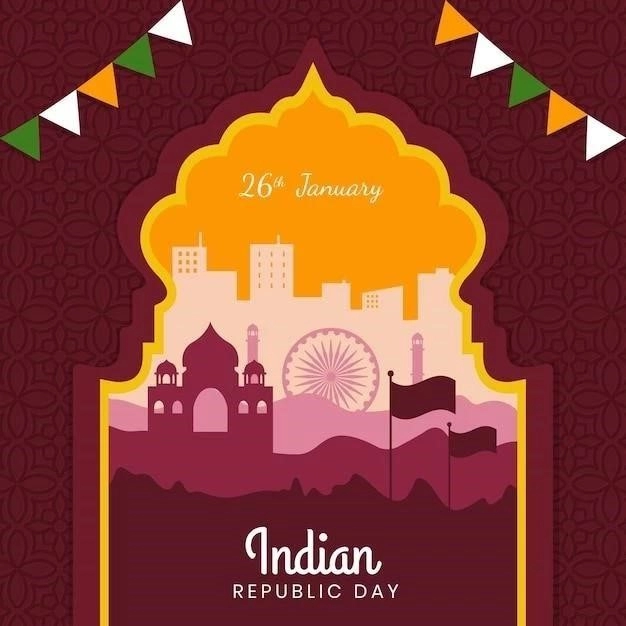The Gateway of India stands as a majestic testament to Indias rich history and architectural brilliance. This iconic arch-monument, located on the bustling waterfront of Mumbai, has become an enduring symbol of the city and a must-visit destination for travelers from around the globe.

A Royal Welcome: The Genesis of the Gateway
The Gateway of India was conceived and constructed during the British Raj. Its origins can be traced back to December 1911٫ when King George V and Queen Mary visited India for the Delhi Durbar٫ a grand imperial ceremony. Their arrival in Bombay٫ as Mumbai was then known٫ marked the first time a reigning British monarch had set foot on Indian soil. To commemorate this historic occasion٫ the British government decided to erect a grand monument as a symbol of their imperial might.
The foundation stone for the Gateway of India was laid on March 31, 1911, by Sir George Sydenham Clarke, the then Governor of Bombay. The task of designing this monumental arch was entrusted to the renowned Scottish architect, George Wittet, known for his mastery of Indo-Saracenic architecture.
Architectural Grandeur: A Fusion of Styles
The Gateway of India stands as a magnificent example of Indo-Saracenic architecture, a style that harmoniously blends elements of Indian, Persian, and Islamic architectural traditions. This architectural idiom, popularized during the British Raj, sought to create a style that reflected the grandeur of the Mughal era while incorporating elements of Victorian Gothic and other Western architectural styles.
Key Architectural Features:
- The Arch: The Gateways most prominent feature is its massive archway, rising to a height of 26 meters (85 feet). The arch is designed in the style of a Roman triumphal arch, a form commonly used to celebrate victorious military campaigns.
- The Dome: Crowning the center of the Gateway is a massive central dome, a characteristic feature of Islamic architecture. The dome adds a sense of grandeur and verticality to the structure.
- The Turrets: Flanking the central dome are four octagonal turrets, each adorned with intricate carvings and designs. These turrets are reminiscent of minarets found in Islamic architecture.
- Intricate Details: The Gateway is adorned with intricate latticework, delicate stone carvings, and decorative friezes. These details showcase the skill of the Indian craftsmen who meticulously carved the yellow basalt stone used in the Gateways construction.
From Imperial Symbol to National Icon: A Shifting Narrative
The Gateway of India was officially inaugurated on December 4, 1924, by the then Viceroy of India, Lord Reading. For the British, the Gateway served as a symbol of their imperial power and a reminder of their presence in India. It served as a ceremonial entrance to India, welcoming viceroys, governors, and other dignitaries to the subcontinent.
However, the Gateways symbolism underwent a profound transformation with Indias independence in 1947. The last British troops to leave India marched through the Gateway on February 28, 1948, marking the end of the British Empire in India. The Gateway, once a symbol of colonial rule, became a potent reminder of Indias hard-won independence.
Today, the Gateway of India stands as a symbol of national pride and unity. It is a popular gathering place for Mumbaikars and tourists alike, a place where people from all walks of life come to enjoy the vibrant atmosphere, the scenic views of the Arabian Sea, and the Gateways architectural splendor.

The Gateway Today: A Hub of Activity
The Gateway of India is not just a historical monument; it is a vibrant hub of activity, a place where Mumbais pulsating energy is on full display. The area surrounding the Gateway is always bustling with people, from vendors selling street food and souvenirs to photographers offering to capture memories against the backdrop of the iconic arch.
Things to Do at the Gateway of India:
- Admire the Architecture: Take some time to appreciate the architectural details of the Gateway, from the intricate carvings to the massive dome.
- Enjoy the Sea Breeze: Take a stroll along the promenade, enjoying the refreshing sea breeze and the scenic views of the Arabian Sea.
- Savor Street Food: Indulge in some of Mumbais famous street food, with vendors selling everything from bhel puri and pani puri to vada pav and chai.
- Take a Boat Ride: Embark on a ferry ride to Elephanta Island, home to ancient cave temples dedicated to the Hindu god Shiva. Boats depart regularly from the jetty near the Gateway.
- Soak Up the Atmosphere: Simply relax and soak up the vibrant atmosphere, watching the world go by against the backdrop of this iconic monument.

A Timeless Landmark
The Gateway of India stands as a timeless landmark, a symbol of Mumbais resilience, its cosmopolitan spirit, and its rich history. It is a place where the past and present converge, where the echoes of colonial history mingle with the sounds of a modern, vibrant city. Whether you are a history enthusiast, an architecture aficionado, or simply looking for a memorable experience, the Gateway of India is a destination that should be on every travelers itinerary.
The Gateway of India: A Continued Legacy
The Gateway of Indias significance transcends its architectural grandeur. It stands as a potent symbol of transition, witnessing Indias evolution from a colony under British rule to a vibrant, independent nation. This monument, once signifying imperial authority, now embodies the spirit of a nation embracing its multifaceted heritage and striding confidently towards the future.
A Microcosm of Mumbai
The Gateways location, overlooking the bustling harbor, reinforces its status as a microcosm of Mumbai. It is a place where people from all walks of life converge – tourists marveling at its architectural splendor, vendors hawking their wares, families enjoying leisurely picnics, and photographers capturing its essence against the backdrop of the bustling harbor. This vibrant tapestry of humanity reflects the essence of Mumbai itself – a melting pot of cultures, traditions, and aspirations.
A Cultural Touchstone
Beyond its architectural and historical significance, the Gateway of India has become a cultural touchstone, deeply woven into the fabric of Mumbais identity. It has served as a backdrop for countless films, literary works, and artistic expressions, further cementing its place in the citys collective consciousness. The Gateway has also been a silent witness to numerous historical events, from political rallies and protests to celebrations of national importance.
Preservation and Conservation
Recognizing the Gateways historical and cultural value, efforts are underway to ensure its preservation for generations to come. The Archaeological Survey of India (ASI), the custodian of the monument, undertakes regular conservation and restoration work to mitigate the effects of time, pollution, and environmental factors.
A Beacon for the Future
As Mumbai continues to evolve into a global metropolis, the Gateway of India remains a steadfast presence, a reminder of the citys rich past and a beacon for its future. It stands as a testament to the enduring power of architecture to inspire, to connect us to our history, and to serve as a symbol of hope and progress. The Gateway of India, with its timeless elegance and enduring symbolism, will continue to captivate visitors and inspire generations to come.
The Gateway of India: A Deeper Dive into its Architectural Significance
While often lauded for its visual impact and historical context, a deeper exploration of the Gateway of Indias architectural nuances reveals a fascinating narrative of cultural fusion and stylistic innovation.
An Architectural Tapestry: Unveiling the Indo-Saracenic Style
The Gateway of India stands as a testament to the Indo-Saracenic architectural movement, a distinctive style that emerged in British India during the late 19th and early 20th centuries. This architectural idiom sought to synthesize elements of Islamic, Indian, and Western architectural traditions, reflecting the complex cultural interplay of the era.
Key characteristics of the Indo-Saracenic style evident in the Gateway of India include:
- The Pointed Arch: A defining feature borrowed from Islamic architecture, the pointed arch, also known as the ogee arch, is prominently displayed in the Gateways central archway. This structural element not only adds a sense of verticality but also creates a visually striking silhouette.
- Jalis: Intricately carved screens known as “jalis” are another hallmark of Indo-Islamic architecture. These screens, often crafted from stone or marble, serve both decorative and functional purposes, allowing for ventilation while providing privacy. The Gateway of India features exquisite jalis on its upper levels, showcasing intricate geometric and floral patterns.
- Chhatris: Small, domed pavilions known as “chhatris” are commonly found in Indian architecture, particularly in Mughal-era buildings. The Gateway of India incorporates these decorative elements atop its four turrets, adding a touch of traditional Indian architectural vocabulary to the structure.
- Yellow Basalt: The choice of yellow basalt, a locally quarried stone, as the primary building material for the Gateway of India underscores the architects intention to root the structure within its Indian context. This durable stone, known for its warm hues and fine texture, lends a sense of solidity and permanence to the monument.
George Wittet: The Architect and His Vision
The design of the Gateway of India is credited to George Wittet, a Scottish architect who played a pivotal role in shaping the architectural landscape of early 20th century Bombay. Wittet, who served as the consulting architect to the Government of Bombay, was known for his mastery of the Indo-Saracenic style, which he believed was uniquely suited to the Indian climate and cultural context.
Wittets vision for the Gateway of India extended beyond creating a visually striking monument. He envisioned the structure as a symbolic gateway to India, a grand entrance that would leave a lasting impression on visitors arriving by sea. He carefully considered the Gateways location, ensuring that it would be perfectly framed against the backdrop of the Arabian Sea, creating a captivating tableau for those approaching Bombay harbor.
A Lasting Legacy: The Gateway of India as Architectural Inspiration
The Gateway of Indias architectural influence extends far beyond its physical presence on the Mumbai waterfront. Its distinctive blend of architectural styles and its symbolic significance have inspired numerous subsequent structures, both in India and abroad.
The Gateways legacy can be seen in:
- Government Buildings: Several government buildings in India, particularly those constructed during the early post-independence era, drew inspiration from the Gateway of Indias architectural vocabulary.
- Civic Structures: The Gateways influence can also be seen in the design of civic structures such as town halls, libraries, and museums, reflecting a desire to incorporate elements of national identity and architectural grandeur into public buildings.
- Commercial Architecture: Even commercial buildings, such as hotels and office complexes, have incorporated elements of the Indo-Saracenic style, often adapting the Gateways distinctive arches, jalis, and chhatris to create a sense of grandeur and visual appeal.
Conclusion: A Testament to Architectural Ingenuity
The Gateway of India stands not merely as a monument but as a testament to architectural ingenuity, a symbol of cultural fusion, and an enduring icon of modern India. Its architectural significance lies not only in its grand scale and visual impact but also in its nuanced blend of architectural styles, its thoughtful incorporation of local materials, and its embodiment of the aspirations of a nation on the cusp of independence.
Beyond Imitation: The Gateways Enduring Architectural Influence
The Gateway of Indias influence transcends mere stylistic imitation. Its impact reverberates through several key aspects of architectural discourse and practice:
1. A Catalyst for Architectural Dialogue:
The Gateway’s hybrid architectural vocabulary sparked a broader conversation about identity and representation in architecture. It challenged the notion of architectural purity, demonstrating the potential of blending seemingly disparate styles to create something novel and contextually relevant. This dialogue continues to influence contemporary Indian architecture, where architects grapple with balancing global influences with local traditions.
2. Redefining Public Space:
More than just a monument, the Gateway redefined the concept of public space in Mumbai. It became a gathering place for people from all walks of life, democratizing access to the citys waterfront. This inclusive aspect of the Gateways design resonated with the aspirations of a newly independent India, where public spaces played a crucial role in fostering a sense of collective identity.
3. A Symbol of Architectural Ambition:
The Gateways sheer scale and ambition signaled a turning point in Indian architecture. It demonstrated a capacity for large-scale construction and sophisticated engineering, inspiring subsequent generations of architects to dream big. This newfound confidence is evident in the ambitious architectural projects undertaken in post-independence India, from monumental dams and power plants to modern airports and skyscrapers.
4. A Legacy in Conservation:
The ongoing efforts to conserve and protect the Gateway of India highlight its importance as a cultural heritage site. The meticulous restoration work, undertaken by skilled artisans and conservationists, serves as a model for the preservation of historic structures across India. This commitment to safeguarding architectural heritage ensures that the Gateway continues to inspire future generations.
Conclusion: A Timeless Testament to Architectural Vision
The Gateway of Indias architectural legacy extends far beyond its imposing physical presence. It stands as a powerful symbol of cultural synthesis, architectural innovation, and the enduring relationship between built form and national identity. As Mumbai continues its evolution into a global megacity, the Gateway will remain a steadfast reminder of its rich past, a beacon of architectural excellence, and an enduring source of inspiration for architects and city dwellers alike.

The Gateway of India: An Architectural Discourse
Delving deeper into the architectural discourse surrounding the Gateway of India necessitates moving beyond a purely aesthetic appreciation. It is within the realm of architectural theory and criticism that we can truly grasp the monuments enduring significance.
Orientalism and the Colonial Gaze
It is crucial to acknowledge the historical context in which the Gateway was conceived and constructed. The Indo-Saracenic style itself was, in part, a product of Orientalist fascination, a romanticized Western interpretation of Indian and Islamic architectural motifs.
Some scholars argue that the Gateway, commissioned by the British Raj, inherently embodies this colonial gaze. Its grand scale and prominent location served as a visual reminder of British imperial power, intended to impress upon visitors the might and majesty of the Empire.
Reclaiming the Narrative: Post-Colonial Interpretations
However, the Gateways story does not end with colonialism. In post-independence India, the monument underwent a significant shift in meaning. No longer viewed solely through the lens of imperial dominance, it came to symbolize Indias newfound freedom and its emergence as a modern nation.
This reinterpretation is evident in the way the Gateway is used today. It is a site of national celebrations, political rallies, and cultural events, a testament to its transformation into a truly public space that embodies the spirit of a democratic India.
The Gateway as a Palimpsest of Meaning
Architecturally, the Gateway of India can be understood as a palimpsest, a layered surface bearing traces of different historical periods and their respective ideologies. Its Indo-Saracenic style, initially a product of colonial influence, has been reappropriated and imbued with new meanings by a post-colonial nation.
This layering of meanings is what makes the Gateway such a fascinating subject for architectural discourse. It challenges us to confront the complexities of history, to acknowledge the power dynamics inherent in architecture, and to appreciate the evolving narratives that shape our understanding of built environments.
The Gateways Enduring Relevance
The Gateway of India stands as a powerful reminder that architecture is never static. Its meaning and significance are constantly being negotiated and redefined by those who interact with it. As India continues to evolve as a global power, the Gateway will undoubtedly continue to spark debate, inspire reflection, and serve as a potent symbol of the nations complex and ever-unfolding identity.
The Gateway of India: An Architectural Discourse (Continued)
Moving beyond the symbolic interpretations, a closer examination of the Gateway’s architectural language reveals a nuanced dialogue between structure, materiality, and context. This discourse further strengthens its position as a significant architectural work.
Hybridity and Architectural Identity:
The Gateway’s Indo-Saracenic style, a hybridity born from colonial influence, presents a compelling case study in architectural identity. While some criticize it as a superficial blend, a deeper analysis reveals a more nuanced approach. Wittet, the architect, didnt merely replicate existing styles. He carefully selected and reinterpreted elements from Islamic, Hindu, and European architectural traditions, creating a unique synthesis that responded to the specific context of Mumbai and its diverse cultural heritage.
Materiality and Craft:
The Gateway’s materiality further enriches the architectural discourse surrounding it. The use of yellow basalt, quarried locally, grounds the monument within its geographic context. This choice reflects a sensitivity to the site and a desire to connect the structure to the surrounding landscape; Furthermore, the intricate carvings and latticework, executed by skilled Indian craftsmen, highlight the collaboration between architect and artisan, a characteristic often overlooked in discussions of colonial architecture. This collaboration speaks to a nuanced understanding of local building traditions and a respect for indigenous craftsmanship.
Urban Dialogue and Evolving Contexts:
Finally, the Gateway’s architectural significance extends beyond its immediate form to encompass its urban dialogue. Situated at the edge of the Arabian Sea, the monument acts as a mediating element between land and water, city and harbor. Its grand archway, once a ceremonial entrance for colonial rulers, now frames breathtaking views of the Mumbai skyline, a testament to the city’s transformation. This evolving relationship with its surroundings underscores the dynamic nature of architecture and its ability to adapt to changing contexts while retaining its historical and cultural resonance.
Conclusion: A Continuing Legacy
The Gateway of India, far from being a static relic of the past, continues to spark debate and inspire architectural discourse. Its hybridity, materiality, and urban dialogue offer valuable insights into the complexities of architectural identity, the interplay between global and local influences, and the enduring power of architecture to shape and reflect cultural narratives. As a symbol of Mumbai’s rich history and evolving identity, the Gateway stands as a testament to the enduring legacy of thoughtful and contextually responsive design. Its story reminds us that architecture, at its best, transcends stylistic categories and historical circumstances to become a timeless expression of human creativity and aspiration.
The Enduring Dialogue: The Gateway of India in the 21st Century
The 21st century has ushered in a new era of globalization and interconnectedness٫ prompting a reevaluation of architectural landmarks like the Gateway of India through contemporary lenses. No longer confined to its historical narrative٫ the Gateway has become a focal point for discussions on urbanism٫ sustainability٫ and the evolving role of monuments in a rapidly changing world.
Urban Regeneration and Public Space:
Mumbai, a megacity grappling with rapid urbanization and its attendant challenges, finds in the Gateway and its surrounding precinct an opportunity for urban regeneration. The monuments location, at the interface of land and sea, positions it as a potential catalyst for revitalizing the waterfront and creating a vibrant public realm. Initiatives to pedestrianize areas around the Gateway, improve connectivity to nearby cultural attractions, and enhance the overall visitor experience reflect a growing understanding of the monuments potential to act as a catalyst for positive urban change.
Conservation and Sustainability:
The Gateway, a structure of considerable historical and architectural value, faces the inevitable challenges of conservation in the 21st century. Pollution, the impact of climate change, and the sheer pressure of tourism necessitate a proactive and sustainable approach to its preservation. The use of innovative technologies for monitoring the structures health, adopting eco-friendly materials for restoration, and raising public awareness about the importance of heritage conservation are crucial steps in ensuring the Gateways longevity for future generations.
The Gateway as a Global Icon:
In an increasingly interconnected world, the Gateway of India has transcended its local identity to become a recognizable global icon. Its image is widely disseminated through digital platforms, serving as a visual shorthand for Mumbai and, by extension, India itself. This global recognition brings with it both opportunities and responsibilities. It reinforces the need to protect and preserve the monument while also leveraging its iconic status to promote cross-cultural understanding and appreciation for architectural heritage.
Conclusion: A Legacy in Progress
The architectural discourse surrounding the Gateway of India remains as dynamic and multifaceted as the monument itself. As we move further into the 21st century, the Gateways legacy will be shaped by ongoing dialogues on urbanism, sustainability, and the evolving role of heritage in a globalized world. It is through continued critical engagement, thoughtful interventions, and a commitment to responsible stewardship that this architectural masterpiece will continue to inspire and resonate with generations to come.










